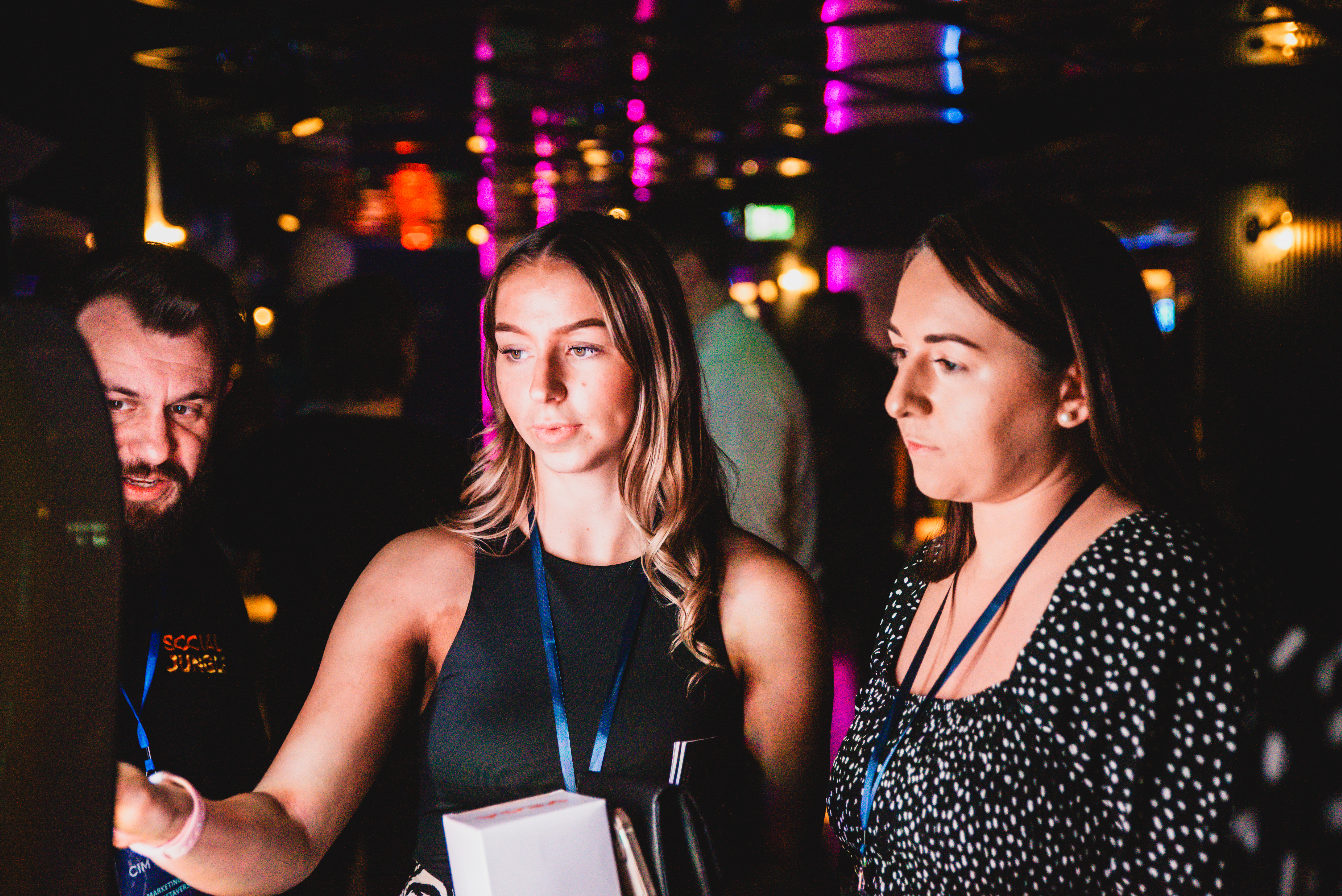Marketing in the metaverse: what do we need to know?
Coined as the ‘meh-taverse’ by some and celebrated as the next big thing by others, this digital frontier is attracting giants like Nike, Gucci, and Coca-Cola, indicating that this year could be a watershed moment for the metaverse.
With tech advancements meaning that the metaverse is growing, CIM Scotland hosted a sold-out event in Vega, Glasgow on 14 March to discuss what the true potential the physical and virtual worlds have for us as marketers, and how the metaverse is re-writing the rules for us as marketers.
Featuring a panel with Greg Anderson (MD at Social Jungle) and Robert Gillespie (Vice President of marketing at JP Morgan), hosted by Ewan Anderson (CIM Scotland Vice Chair of communications and Associate Marketing Director at Eden Scott), the event also included the opportunity to try a host of innovative technology. Digital marketing agency 29studios provided virtual reality (VR) headsets and experiences – including the Apple Vision Pro (which has not been released yet in Scotland), while Social Jungle showcased how experiential augmented reality (AR) works.
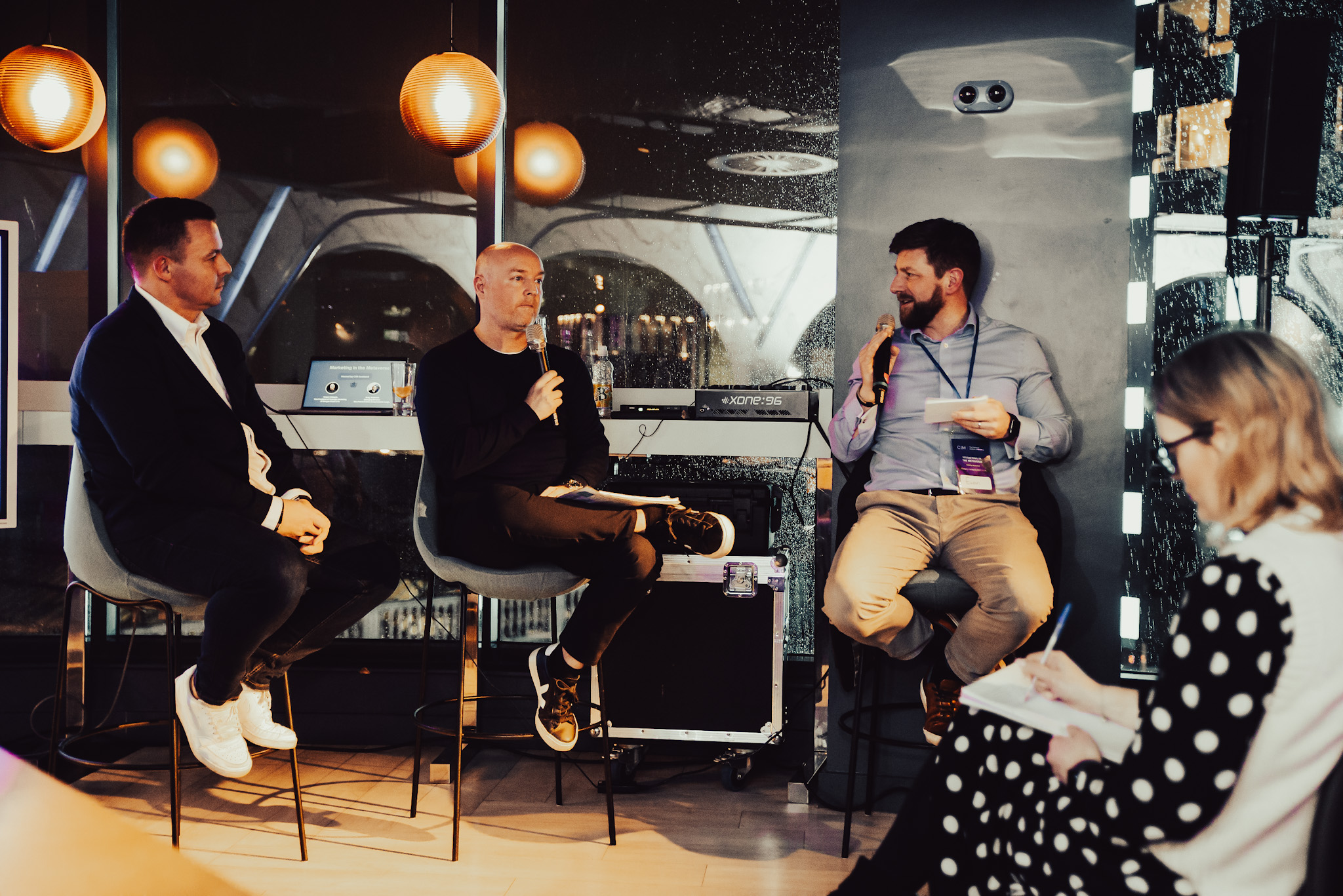
Panelists Greg Anderson (l) and Robert Gillespie (middle), with host Ewan Anderson (r). Image by Kieran Edward McDonald.
What exactly is the metaverse?
While many may think the metaverse is something new, the term itself was first coined in 1992 by author Neal Stephenson in his science fiction novel ‘Snow Crash’, where he described a virtual reality-based successor to the internet. It has developed slowly over the years, bolstered by virtual world platforms like Second Life, but rises in AR, VR and even artificial intelligence (AI) in the past few years have sped up the creation.
Still, the metaverse remains an enigma for many, embodying a spectrum of virtual experiences that defy a singular definition.
Greg Anderson, MD of Social Jungle, known for crafting experiential wonders, noted the lack of consensus on what the metaverse is, even among his team. He sees it as a 3D internet where individuals can engage with each other in VR settings, creating a fertile ground for unprecedented engagement and “creating cool shit”.
Robert Gillespie, with over two decades of marketing prowess and now spearheading initiatives at JP Morgan, perceives the metaverse as “a collection of virtual worlds that enhance and extend our social interactions” digitally. This aligns with the growing trend of immersive technology, which brands are increasingly adopting to connect with their audience in novel ways.
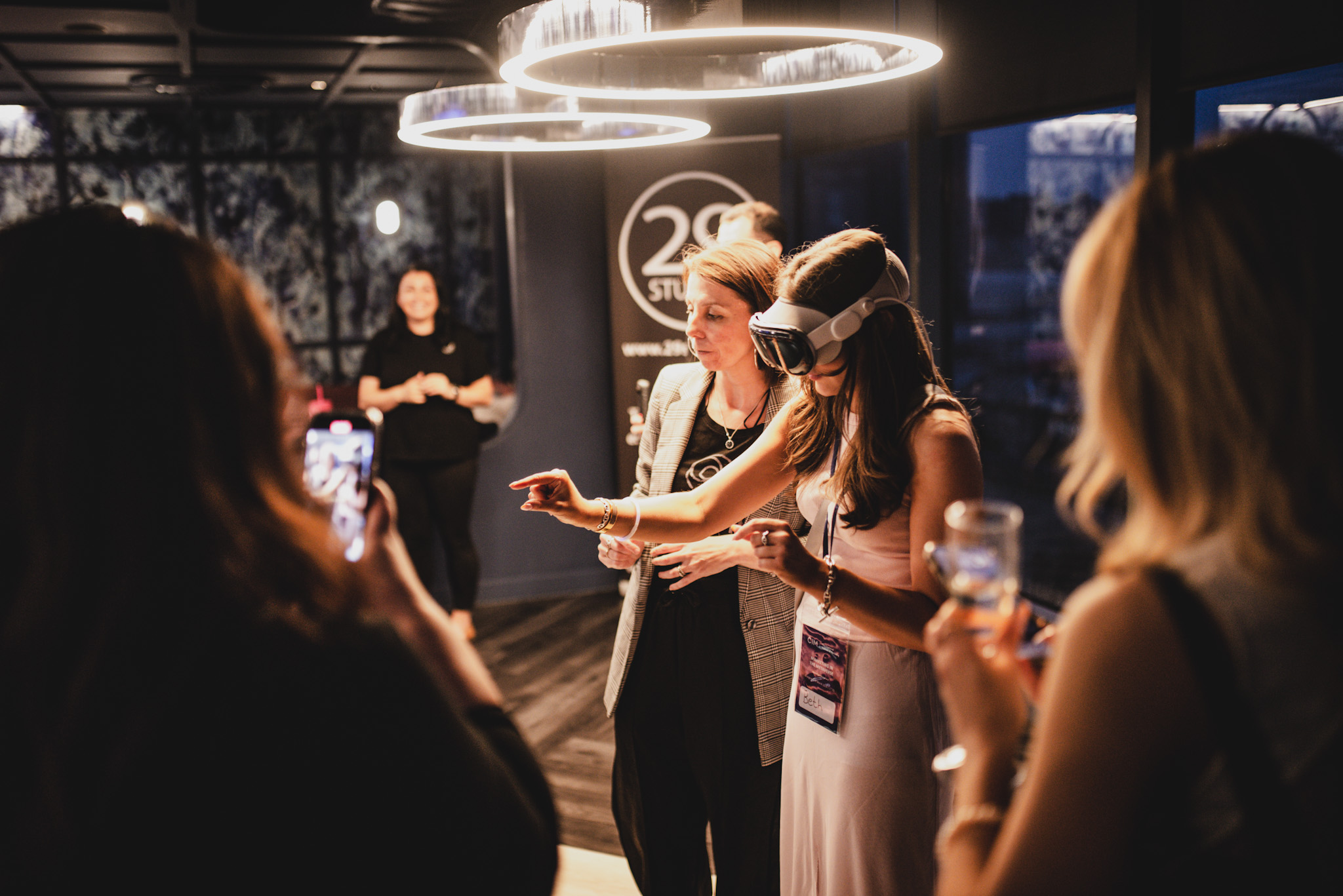
Attendees using 29Studios VR technology. Image by Kieran Edward McDonald.
The rise of immersive experiences
Why this shift towards immersive technology? Greg attributes this to the evolution of social media and content creation. The demand for shareable, unique experiences is higher than ever, driving brands towards technologies like VR and AR to craft memorable moments for their audiences. These technologies not only allow for engaging customer interactions but also open new avenues for data collection and personalised experiences.
His team at Social Jungle saw this come into the forefront during Covid: due to lockdown, children couldn’t visit Santa and get the traditional photo on his knee. Social jungle was asked by a client to create an experience to help alleviate this: and they developed an AR experience to allow children to get a ‘photo’ with Santa. They then worked on enhancing this to include other characters such as Rudolph, a snowman and more – with an Easter version in the works at the time of the event.
By providing such an immersive experience that people want to take part in, Greg noted that it does make it easier to assist data collection for a company: with users putting in their name and email address or phone number to get a copy of their photo.
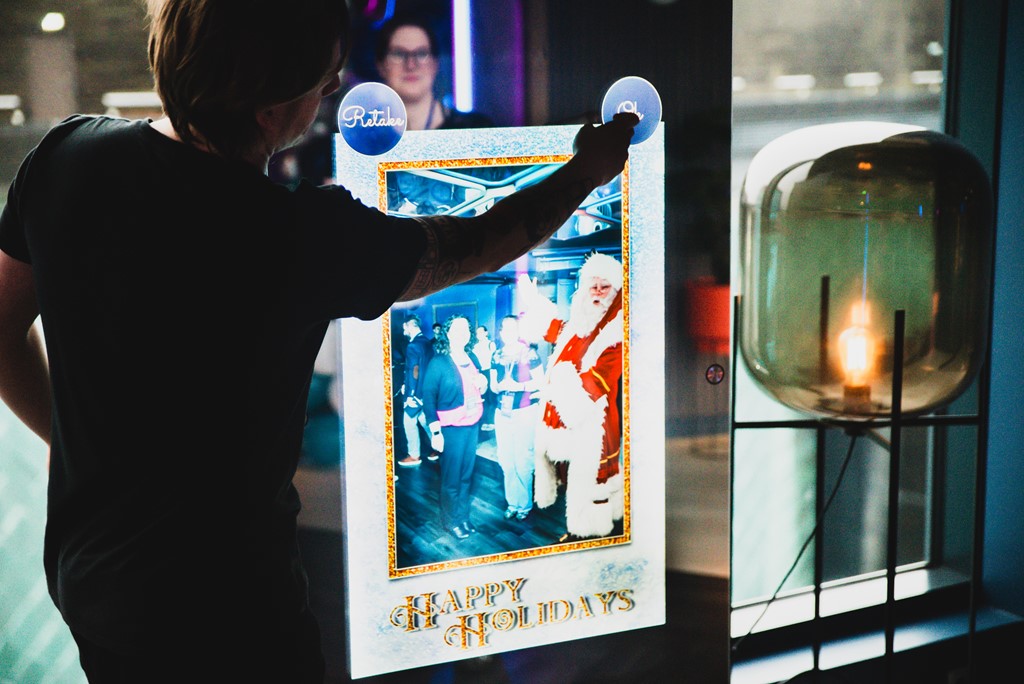
Social Jungle's Christmas AR technology being used. Image by Kieran Edward McDonald.
The fast-paced growth of immersive technology
The landscape of event technology is rapidly changing, with AI leading the charge. Robert highlights the importance of adapting to these changes to stay ahead. He draws on his experience with AI in creating a photo expo platform and noted the ‘Wren’s My Kitchen Coming’ campaign to illustrate how visual customisation tools are becoming integral in meeting consumer expectations. The integration of AI is not about replacing human creativity but about enhancing the efficiency and effectiveness of the ideation process, ensuring that strategy remains a distinctly human domain.
Robert noted: “AI helps make things a bit quicker and easier for ideation, but it’s not magic sprinkles to make things better.” He mentioned testing it on with emails and copy, seeing if human-written or AI-written lines delivered the best results. While he said the difference was small, AI copy did provide better results.
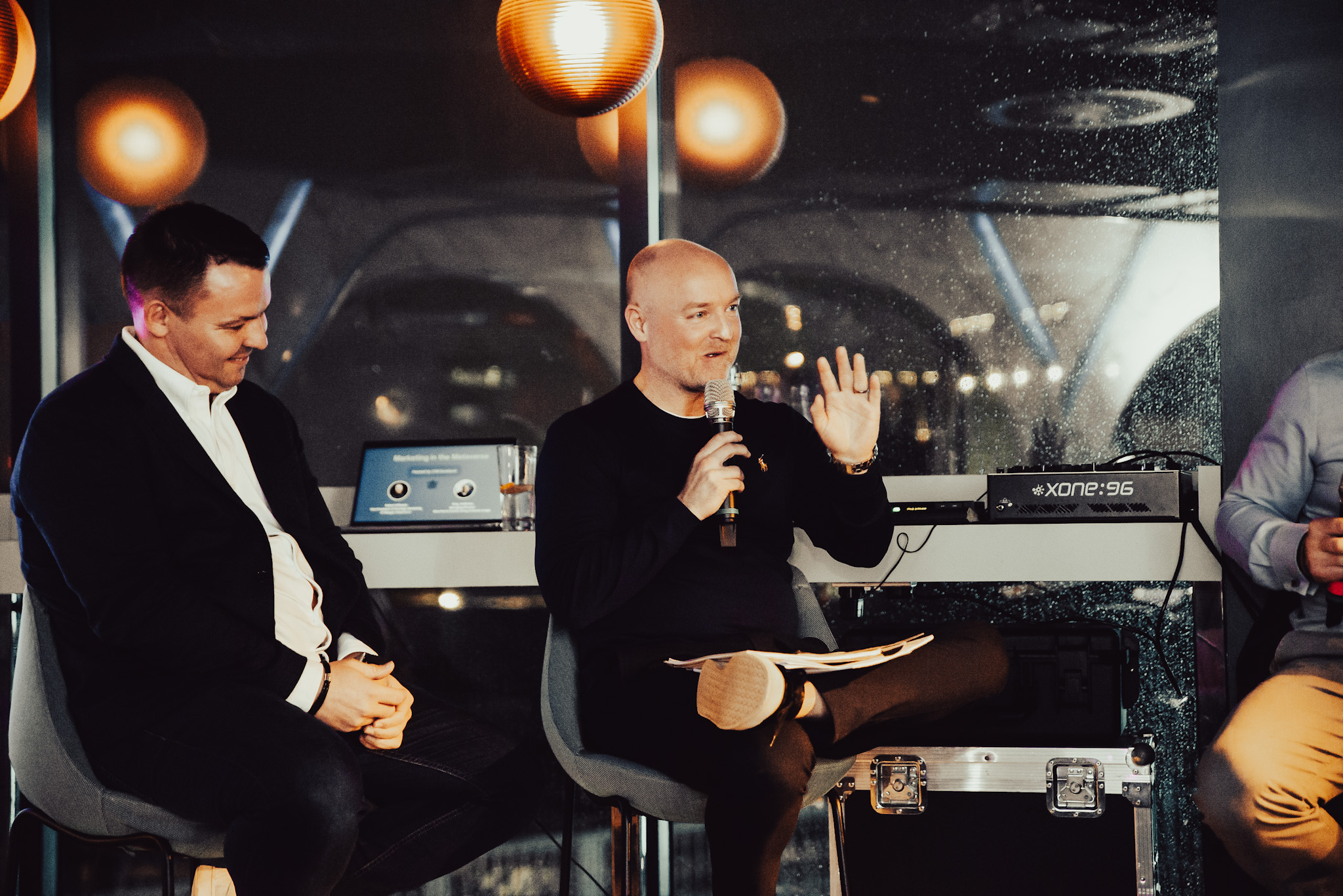
Panelist Robert answers a question. Image by Kieran Edward McDonald.
The concerns and excitements around AI
So does this mean that we should all re-train and that AI, VR and AR will take our jobs? No. While understanding the metaverse and all it has to offer can help us with marketing, at the moment it should be seen as a great way to enhance what we offer…while being aware of the limitations.
Both Greg and Robert acknowledged the potentials and pitfalls of AI in marketing. Greg admitted “AI is amazingly cool when used responsibly but I have the fear around it”. While he has carried out experiments with AI in the office, he underlines the importance of human oversight in ensuring that technology serves its intended purpose without unforeseen consequences.
This comment came at a time while issues with AI have been at the forefront of the media: ‘Willy’s chocolate experience’ in Glasgow was heralded as a magical themed experience, but customers were disappointed to arrive to a half-empty warehouse with limited supplies. The problem was that the website and marketing for the event had used AI, with generated pictures of an enchanted garden and imagination lab alongside copy that promised ‘optical marvels’ and ‘magical surprises’.
The concern is that AI sacrifices quality for speed, so having a human element to make sure that things are accurate is essential: Robert noted “Strategy is still for humans, but AI will help you get there more effectively.”
Another potential worry around the metaverse comes from privacy: for example, are documents uploaded to tools such as ChatGPT ‘remembered’ and can the documents or data be pulled later? The same worry is made around images and people’s pictures or artwork being used in AI. “You’ve got to be responsible” Greg stressed, noting that legality and protection for metaverse tools hasn’t caught up with the actual use of them.
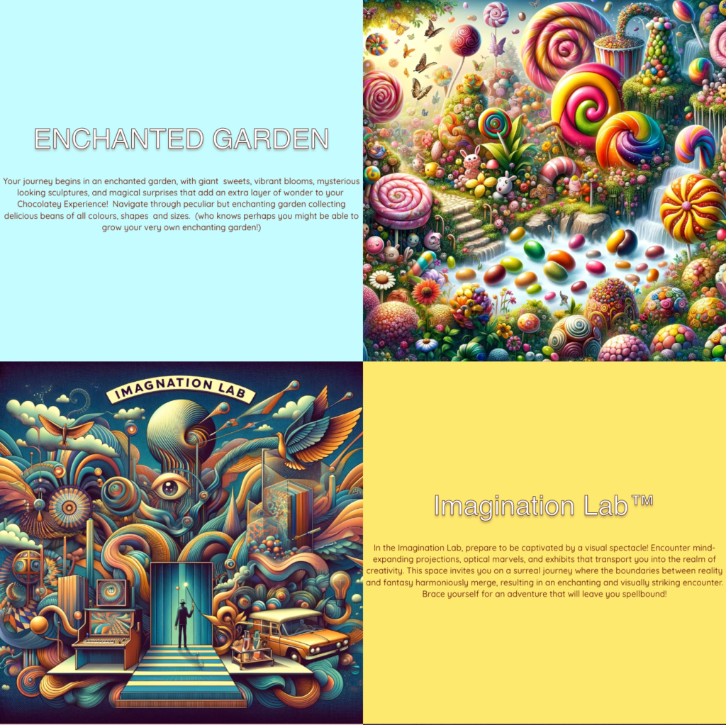
Screenshot from the now-deleted Willy's Chocolate Experience website
Can the metaverse help the bottom line for business?
While the metaverse can take customers on great experiences, the question is: can it help deliver return on investment (ROI) for businesses, or is it more around engagement?
Greg noted that when people come to Social Jungle with an idea, ROI doesn’t seem to be front of mind. He wants to make it so that ROI is considered, and noted again how AR experiences can help with data capture, along with being able to see how often things are shared.
For AI, on the other hand, Robert has seen budgets come up in conversation quite early. He recommends for anyone who wants to put a business case to stakeholders for investing in an AI (or other metaverse) tool to test or trial different tools and present what they have learned, any issues and how it can be used to help the business. This, he says, will help get buy-in.
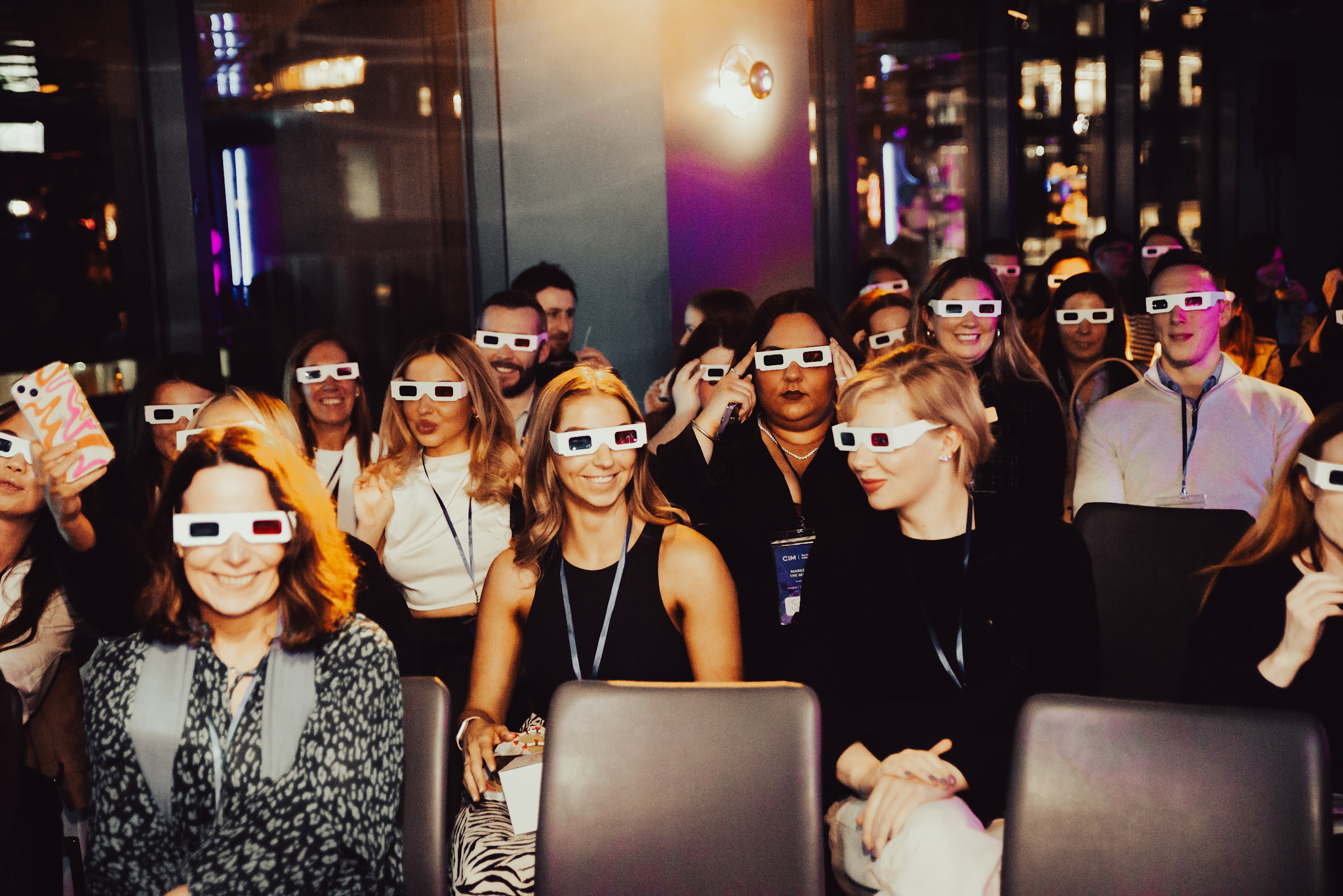
Attendees from the event in the audience, wearing old-school 3D glasses. Image by Kieran Edward McDonald.
The future of marketing in the metaverse
Looking ahead, the metaverse and AI are set to redefine the marketing landscape. Robert envisions a future where strategy remains human-led but tactics become increasingly automated, allowing for more personalised and efficient consumer journeys, while Greg sees the huge opportunities for the events marketing sphere: noting an experiential ‘fare-est of them all’ gamification where a taxi passenger can get their trip for free.
The rapid evolution of these technologies fosters both excitement and apprehension, highlighting the need for continuous learning and adaptation. The need for training to get staff up to speed and able to use these new technologies will be key.
As we venture into this uncharted territory, the role of marketers will evolve, but the essence of marketing—creating meaningful connections—remains unchanged. The metaverse offers a new canvas for storytelling, and it's up to us to harness its potential responsibly and creatively.
In conclusion, the metaverse isn't just a new playground for marketers but a signpost of the future of engagement. As we navigate this digital odyssey, our success will hinge on our ability to blend technological innovation with storytelling, ensuring that human experiences remain at the heart of the digital expanse.
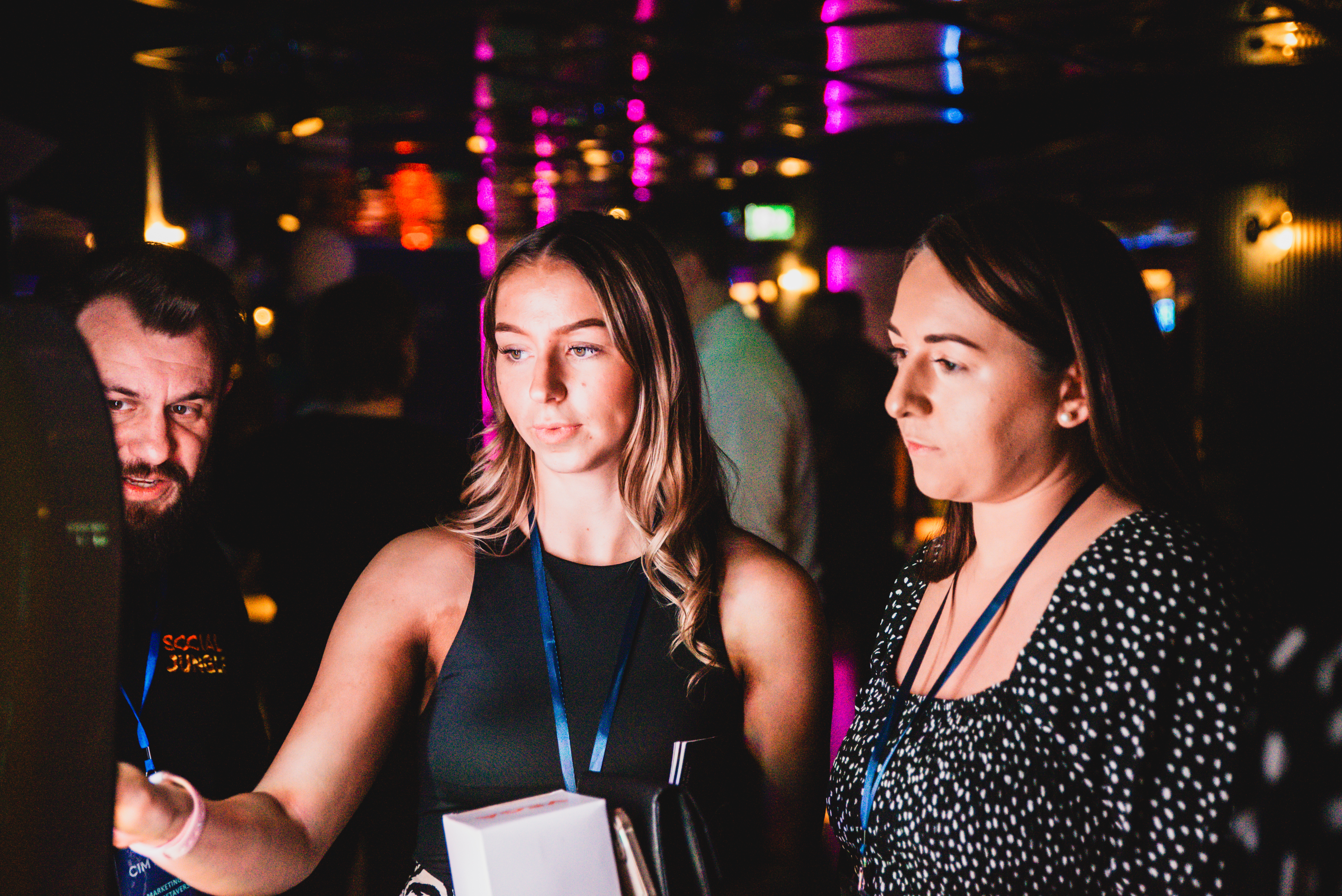
Attendees using Social Jungle tech post-event. Image by Kieran Edward McDonald.